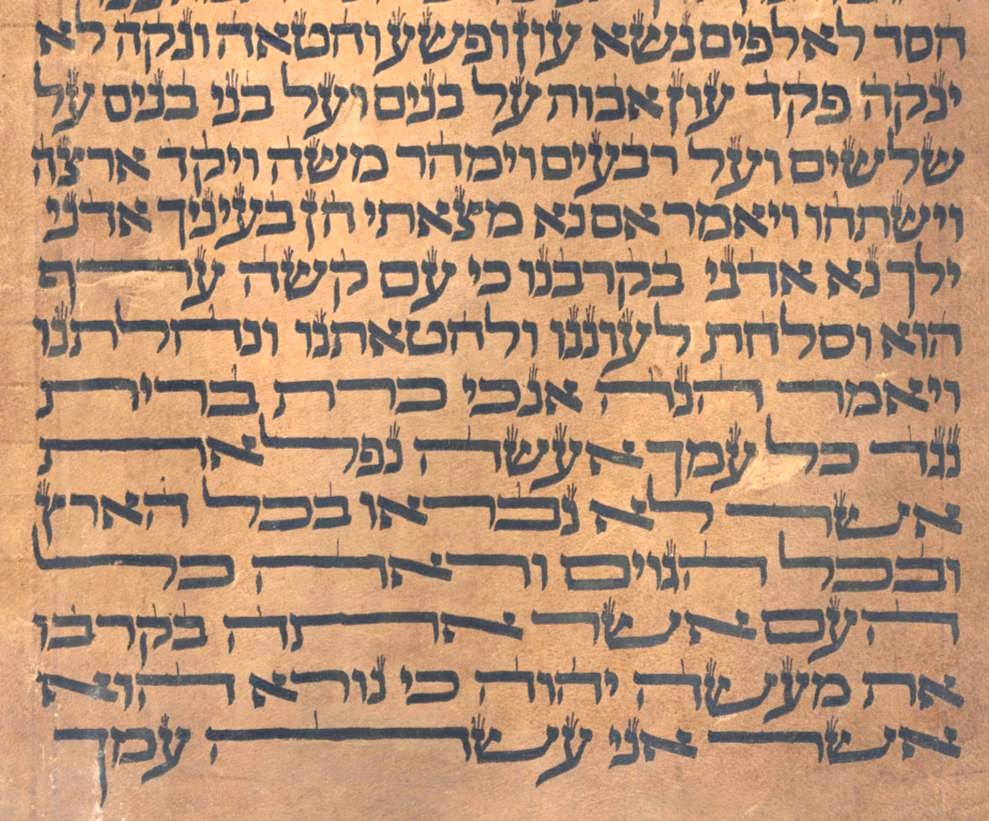

With lots of simchat torah…
This image comes from the Rhodes Jewish Museum website. They provide the following description of this sefer torah:
The extraordinary story pertaining to this Sefer Torah is that it was written and used in Spain for 300 years prior to the Spanish Inquisition in 1492, it is believed that it was then taken with the Sephardic Jewish refugees with them when they resettled on the Island of Rhodes in the Aegean Sea.
One of the oldest Sefer Torah scrolls in the world was publicly displayed for the first time in the United States at the
Sephardic Temple Tifereth Israel on Sunday, September 21, 2003. The opportunity to see the ancient scroll attracted hundreds of people, including many Sephardic Jews, whose ancestors were from the Island of Rhodes.In September 1943 the German military commanders took control of Rhodes. Several months later, recognizing an escalation of insecurity, the Jewish community leaders gave their Torahs to the Turkish community leaders for safe keeping. Sadly, in July 1944, the Jews of Rhodes were deported to Auschwitz where most of them were murdered. After the War, the Torahs were returned to the few people of the Jewish community that survived.
In 1984, the President of the Jewish Community of Rhodes, Maurice Soriano, transferred possession of this particular ancient Sefer Torah to the Chalom synagogue in Buenos Aires, Argentina which consisted of many Jews from Rhodes. This was facilitated by Salvador Notrica, then President of the Chalom synagogue.
In 2001, the Sefer Torah was scientifically measured using the Carbon-14 dating analysis and was found to be approximately 800 years-old. The scroll was examined by the institute “Consejo Nacional de Investigaciones Cientificas y Tecnicas”, a department of the University of Buenos Aires.
This revealed a significant Jewish historical link to Rhodes, as well as a special insight into early Judaic religious writings.
In January 2002, Aron Hasson, the Founder of The Rhodes Jewish Historical Foundation, traveled to Buenos Aires to make arrangements of having the Sefer Torah on display in the United States. The Sefer Torah arrived in Los Angeles in April 2003.
Research and Analysis Confirms the Sefer Torah’s Sephardic Origin From Spain and Portugal:
During the summer of 2003, the Sefer Torah has been studied and analyzed by several Judaic scholars, including “sofers” (scribes who write the Torahs).
We have learned that there are many different indications which give clues as to a Sefer Torah’s age and origin. The following are some of the easier examples without getting too technical:
*Modern Torahs all have 42 lines per column, while the Rhodes Torah has 45 lines per column.
*The Hebrew letter “lamed” is now written with a “cap” at the top, while the Rhodes Torah has a “straight” top.
*When the letters “nun” and “yud” are next to each other they are separate letters, while the Rhodes Torah has the “nun” extend below the “yud”.
*In order to have the left and right columns even, some letters are elongated. In the Rhodes Torah the letter “shin” is elongated, unlike modern Torahs.
*Initial research verifies that the particular Hebrew writing and spacing style dates back to the time of Maimonides of the 12th century, as well as confirming its Sephardic origin from the Iberian Peninsula.








Shabat Shalom and Hag Sameah from France
I was wondering why the letters are elongated and found one explanation that it is to prevent the addition of words into the text, thus to prevent the distortion of the original meaning of the text.
However, from the bigger picture one can see gaps within the text of the scroll which contradicts the “prevent addition of words”-explanation. So now I’m puzzled as to what is the purpose of the elongation. Anyone?
From the link above:
In order to have the left and right columns even, some letters are elongated. In the Rhodes Torah the letter “shin” is elongated, unlike modern Torahs.
Initial research verifies that the particular Hebrew writing and spacing style dates back to the time of Maimonides of the 12th century, as well as confirming its Sephardic origin from the Iberian Peninsula.
Themiddle, I did read that quote, but I found it somehow to be conflicting with the picture.
If you check the big picture of the scroll, you can see spaces at the end of the lines, and places where left and right columns are not even, e.g. 3rd and 4th lines of the second “page” (sorry, I don’t know the right term) in the picture.
So the purpose of elongating is to align left and right columns. But it seems that it isn’t done for all lines (why?), and that’s what caught my eye.
nice, though if i had to choose, id grab me the aleppo codex. now if only more of the missing pages turned up at random like the one found in new york…
some of it can be seen online.